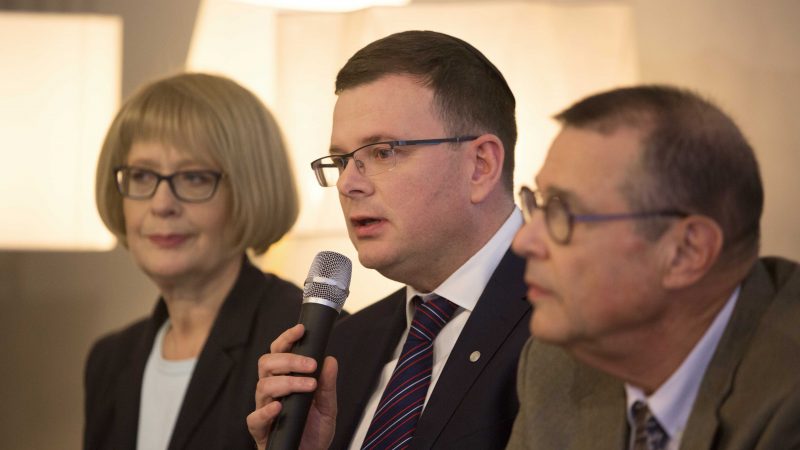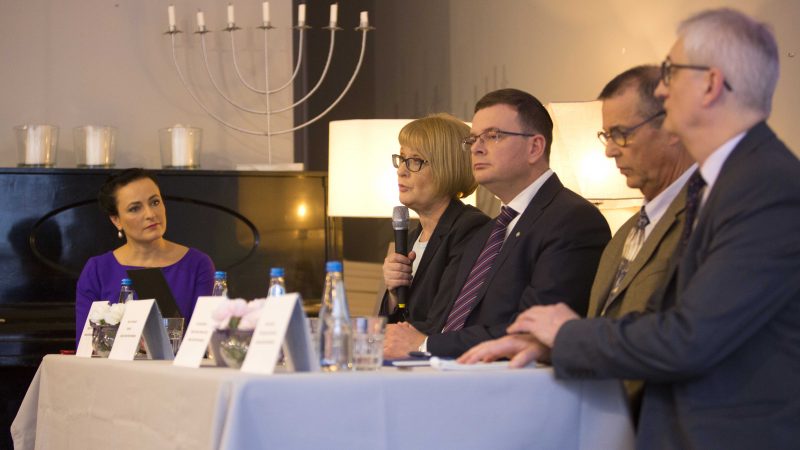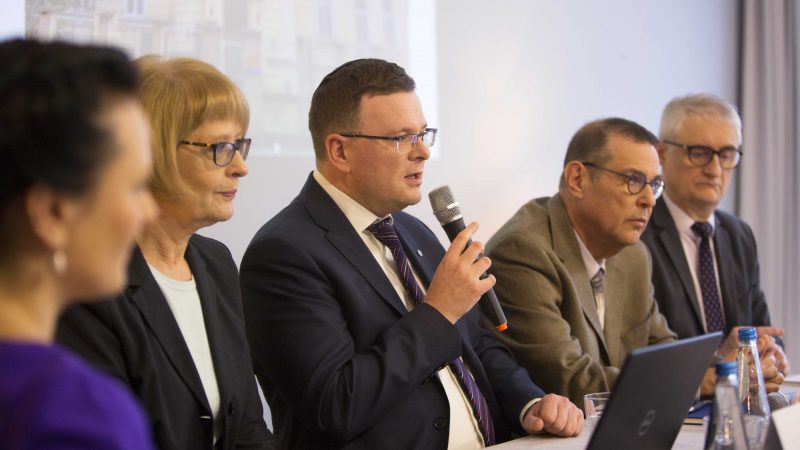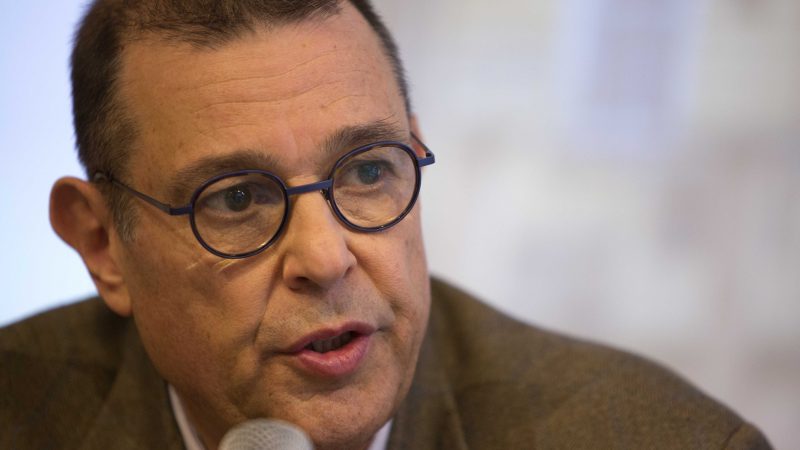Professor Daniel Blatman in the Warsaw Getto Museum.
At its press conference of 14 December 2018, the Warsaw Ghetto Museum presented the chief historian of the museum’s permanent exhibition, Professor Daniel Blatman. He was presented to the public by museum director Albert Stankowski and museum deputy director Dr. Hanna Węgrzynek.
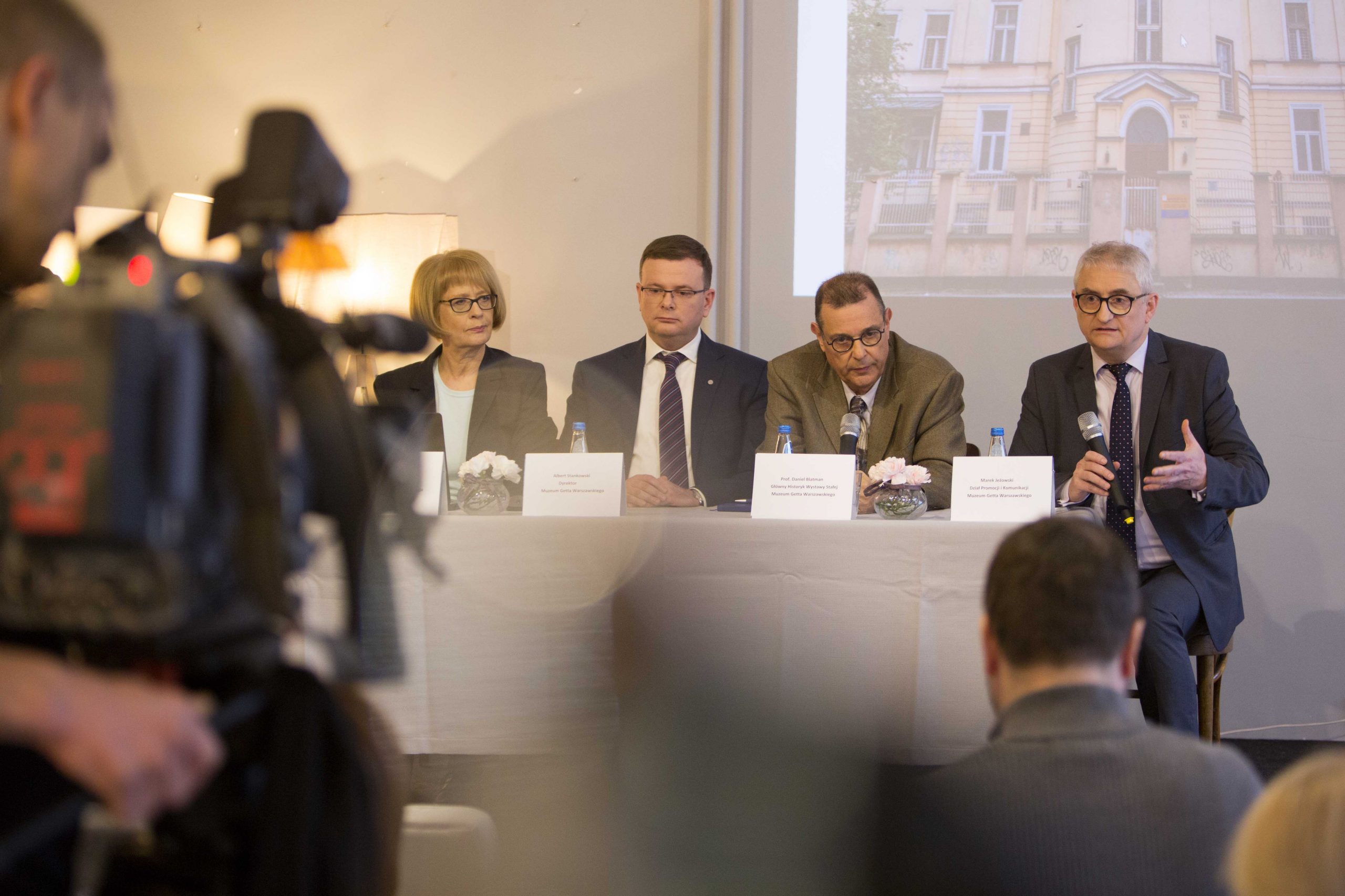
We publish Prof. Daniel Blatman’s statements in extenso:
The first point to make is actually on the mission or the opportunity to create what I would consider to be the main Holocaust historical museum in Poland. In seems to me – and I think this is the general view held around the world – that Poland itself is actually a memorial to the Holocaust, because we have so many memorial sites, so many sites of the former Nazi concentration camps, and we have exhibitions, also in this city’s museums, such as the Holocaust gallery in the Polin Museum, but we actually do not have one Holocaust museum that would tell the story of how Polish Jews lived under the Nazi occupation.
What I would like to achieve in this museum is to address the broad spectrum of Jewish life and death during the Nazi occupation through the perspective of the history of the Warsaw ghetto. Having said that, we need to deal with the different perspective of how Jews lived in other parts of Poland, how Jews lived in other ghettos, and to address that unique phenomenon of ghettoization, which the Nazis forced upon the Jewish community here, after taking over the country. To put it one way, we have the mission of telling a wider story of the Jewish community in Poland through the perspective of this particular ghetto established here in the former Polish capital in 1940.
Let me now move on to the second point I wish to emphasize. The question is (and I have been asked this question on a number of occasions): what is going to be different about this exhibition, what will differentiate it from other Holocaust museums around the world, which all tell – more or less – the story of Jews living under the Nazi occupation in various parts of Europe. I would say that each museum, whether it is in Israel, in the U.S. or other places in Europe, has to create a language that collaborates with the society that put it together, that had collaborated in the bringing that very museum into existence. Yad Vashem in Jerusalem has decided on one language, the Holocaust Museum in Washington D.C. decided on another language, and so on, and so forth. This is completely legitimate; each museum has its unique message that it wants to bring to the society. I think that the Holocaust museum that is going to be built her, in the centre of the Polish capital, has to develop its own language, which is not similar to that of other museums.
I believe that the history of the Jews in Poland during the occupation is formed out of two narratives; first of all it is connected with the Jewish history, but no less importantly it is part of the Polish history. Polish Jews who perished during the Holocaust perished as Polish citizens of Jewish origin. And I believe that the right way to present the history of the Warsaw ghetto is to find ways of integrating it into the overall picture of this city under Nazi occupation. There was a wall that separated Jews and Poles during the Holocaust, but that wall was created neither by Jew nor Poles; it was created by the Germans. The Jews from one side and many Poles from the other side tried to cope with this forced terror policy enforced upon them by the occupier. I am not negating that many Jews were probably disappointed with the way that Poles tried to help them or to assist them and how they manifested their sympathy through the Holocaust tragedy; that existed. I believe that most of the Jews – though isolated and locked behind the wall – regarded themselves under this occupation as part of the occupied city, to which they had contributed as did their fathers and grandfathers before them for generations, in every aspect of life that you can imagine. Thus, I wish to create a museum which deals with the Jewish tragedy not apart from what was going on in Warsaw during the occupation, but as part of what was going on in Warsaw during the occupation, with all the lights and shadows that followed this encounter.
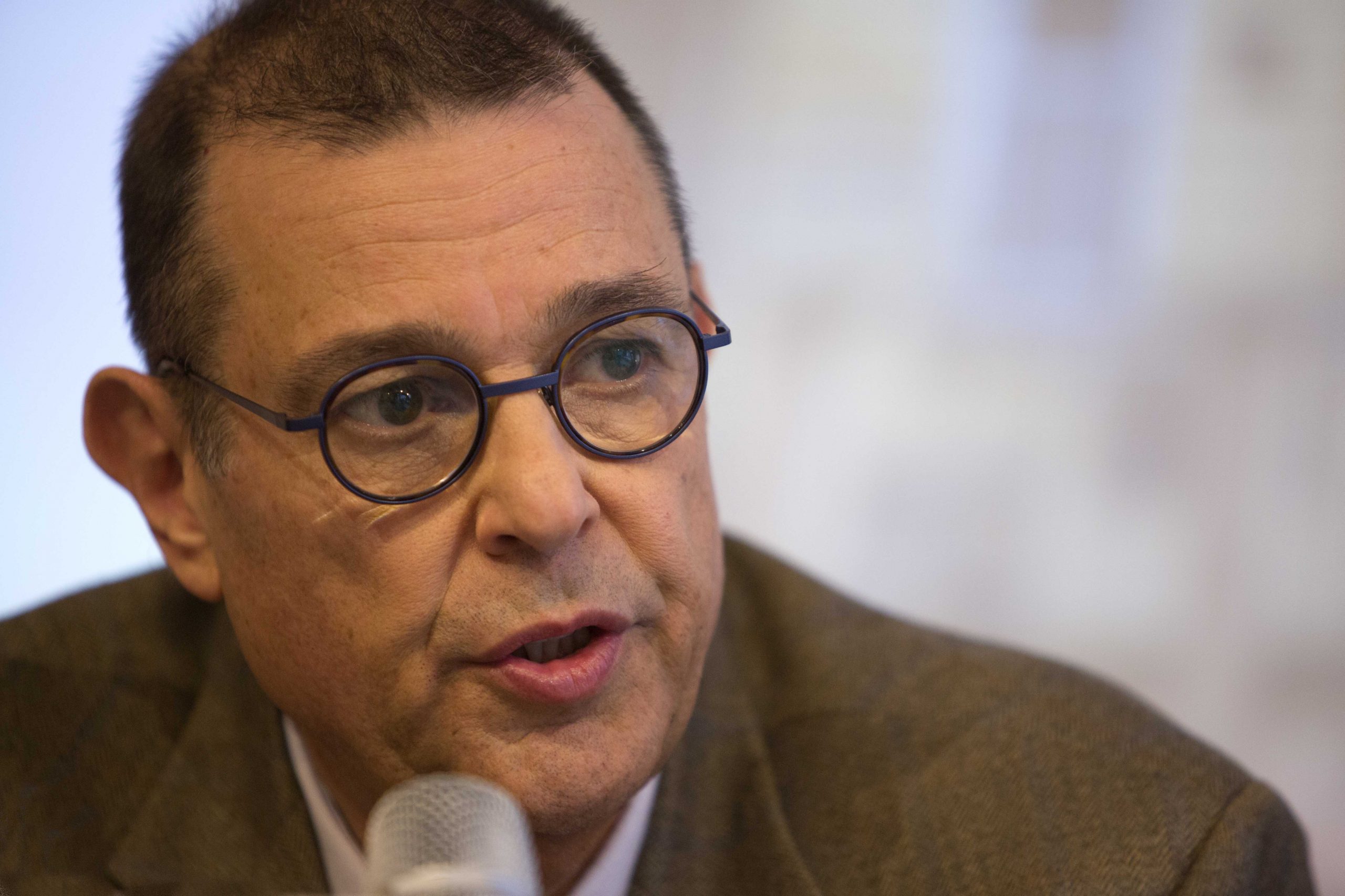
To summarise this point, I would emphasize in conclusion that this Holocaust museum which is being created for the next generation, 80 years after the Holocaust, should put an end to the traditional – I would call it – competition of victimhood and should pay tribute to all victims of Nazi genocide, and that includes Jews, Poles and all the other victims of Nazi genocide. I believe we should deliver a message, a humanistic message to the next generation, without blaming each other or being either antisemitic or anti-Polish. As I say this I am not referring to framing history in a wrong perspective, a revisionist perspective. All the lights and shadows that are connected with the very sensitive issue of the Polish-Jewish relations should be put out and dealt with as they were. However, I believe we should bring a different message; as I said: stop this competition of victimhood and try to understand the Holocaust differently.
The last thing that I would like to bring to your attention in this talk is that a very important mission for me is to correct some misunderstandings and to raise some issues that were neglected (I am not saying, on purpose, but that is the way it is) in some other Holocaust museums. I will emphasize two examples here. One is connected with life, beliefs and difficulties of religious Jews who lived in the ghetto. That topic was completely neglected for many years by other museums or sometimes touched on in a very apologetic manner, without a real effort to understand: What was the real issue of being a religious Jew living in the ghetto? What was the historical understanding of the religious living in the ghetto? It is very easy for us to understand what the Zionist thought, the Bundist thought, the communist thought was; that is easy to explain. I would like to get into this very difficult domain, which was left almost absolutely untouched in the past. There was a huge fragment of the Jewish society who tried: to preserve the life as it was before the war, in terms of keeping religious [practices]; and to understand the meaning of this historical time they were passing through. This is something that I would like to try to cope with and to bring it to the knowledge of the visitor.
Another example relates to the traditional historical debate on who holds the historical priority in Jewish armed resistance against the Nazis: is it this organisation or that organisation. This should be ended. All Jewish fighters should be acknowledged equally, without preferring this part or the other part, this organisation over that organisation because of all kinds of historical or political biases that existed in the past. This is the second example of a topic that has not been dealt with in other Holocaust museums.

Daniel Blatman is the Max and Rita Haber Professor in Contemporary Jewry and Holocaust Studies at the Hebrew University of Jerusalem. He is also the head of the Avraham Harman Research Institute of Contemporary Jewry and the former director of the Centre for the Research on the History and Culture of Polish Jewry at the same university. He has worked on the history of the Jewish labour movement in Eastern Europe, the Holocaust in Poland, Nazi annihilation policy and the 20th century genocide.


